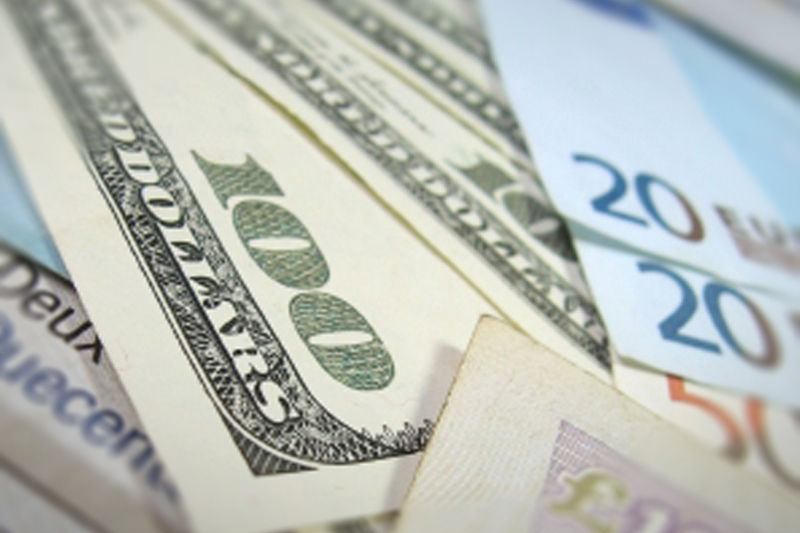Investing.com -- EUR/USD retreated from 9-month highs hit early in Tuesday's session, after the European Commission sent stark warnings of stagnant economic growth amid severe headwinds from persistently low inflation.
The currency pair traded in a broad range between 1.1496 and 1.1615, before settling at 1.1498, down 0.22% on the session. At session-highs, the euro extended gains from the last week to move above 1.16 for the first time since last-August's Flash Crash when the currency pair surged approximately 5% in a span of four trading days. With the slight losses, the euro halted a six-day losing against the dollar. Over the last month, the euro gained roughly 1% against its American counterpart.
EUR/USD likely gained support at 1.0538, the low from December 3 and was met with resistance at 1.1713, the high from Aug. 24.
On Tuesday morning, the European Commission downgraded its annual GDP growth outlook citing weakness in China, subdued performance among key trade partners and lagging investments. In its 2016 spring forecast the 19-nation bloc lowered full-year economic growth to 1.6%, slightly below previous estimates of 1.7%. At the same time, the European Commission expects consumer prices to tick up by 0.2%, sharply below previous expectations of 0.5%.
"The economic recovery in Europe continues but the global context is less conducive than it was," European Commissioner vice president Valdis Dombrovskis said in a statement.
Meanwhile, the dollar received a boost on Tuesday after the Reserve Bank of Australia (RBA) lowered its benchmark interest rate by 25 basis points to a new record-low of 1.75%. As a result, the dollar surged versus a host of currency from commodity-dependent economies. AUD/USD fell more than 2.3% to an intraday-low of 0.7490, its lowest level in more than three weeks. USD/NZD lost more than 1.4% to an intra-session low of 0.6922, while USD/CAD gained more than 1.3% to a session-high of 1.2701.
The Japanese Yen soared to fresh 18-month highs against the dollar at ¥105.55, amid heightened skepticism from currency traders on added intervention from the Bank of Japan in the coming months, resulting in sharp devaluations in the safe-haven currency. Last week, USD/JPY plummeted nearly 5% in consecutive sessions after the BOJ roiled global foreign exchange markets with a surprising move to leave its benchmark interest rate at record-lows.
Elsewhere, investors parsed comments from a pair of key Federal Reserve policymakers for clues on the timing of further tightening from the U.S. central bank. On Tuesday morning, Atlanta Fed president Dennis Lockhart told reporters at the 21st Annual Financial Markets Conference outside of Jacksonville, Florida, that although it is still possible for the Fed to raise short-term interest rates this year, any rate hikes "depend entirely on how the economy evolves." Last week, the Federal Open Market Committee (FOMC) held its benchmark Fed Funds Rate at its current targeted range between 0.25 and 0.50%, citing an uncertain economic and inflationary outlook. Lockhart is a non-voting of the FOMC during the current cycle.
When the Fed ended a six-year Quantitative Easing program in October, 2014, Core PCE inflation stood at 1.6%, slightly below its targeted 2% objective. When the U.S. Commerce Department released its Core PCE price index last week for April, the reading was virtually unchanged from its level 21 months earlier. At a separate panel during Tuesday's conference, Fed Cleveland president Loretta Mester, a voting member, emphasized that there's "convincing evidence," that Quantitative Easing is not infinite. Core PCE inflation, the Fed's preferred gauge of price stability, strips out volatile food and energy prices.
Any rate hikes by the Fed this year are viewed as bullish for the dollar, as investors pile into the greenback in an effort to capitalize on higher yields.
The U.S. Dollar Index, which measures the strength of the greenback versus a basket of six other major currencies, gained more than 0.25% to an intraday high of 92.92. The index, which is down more than 7% since early-December, halted a six-day losing streak.
